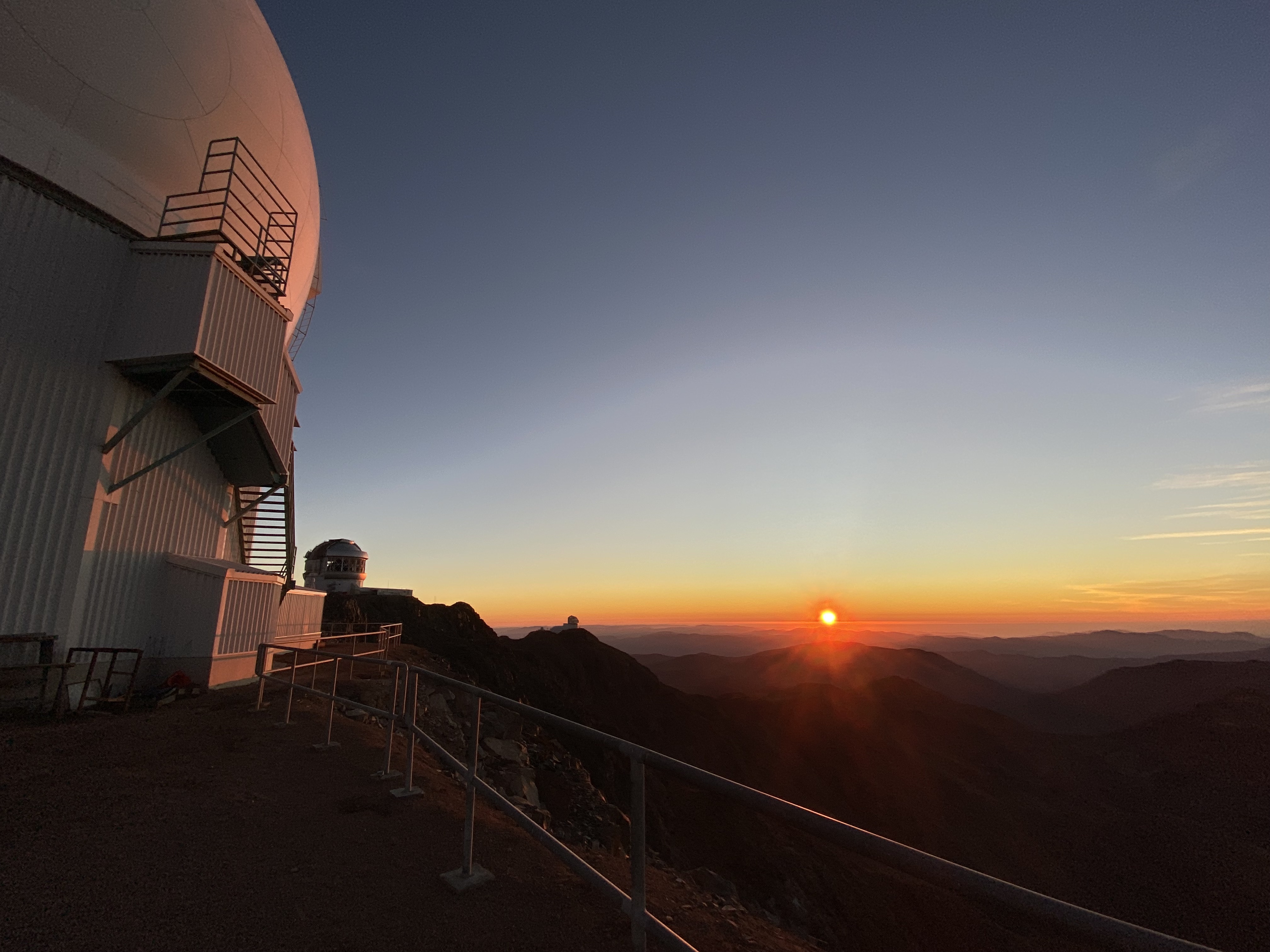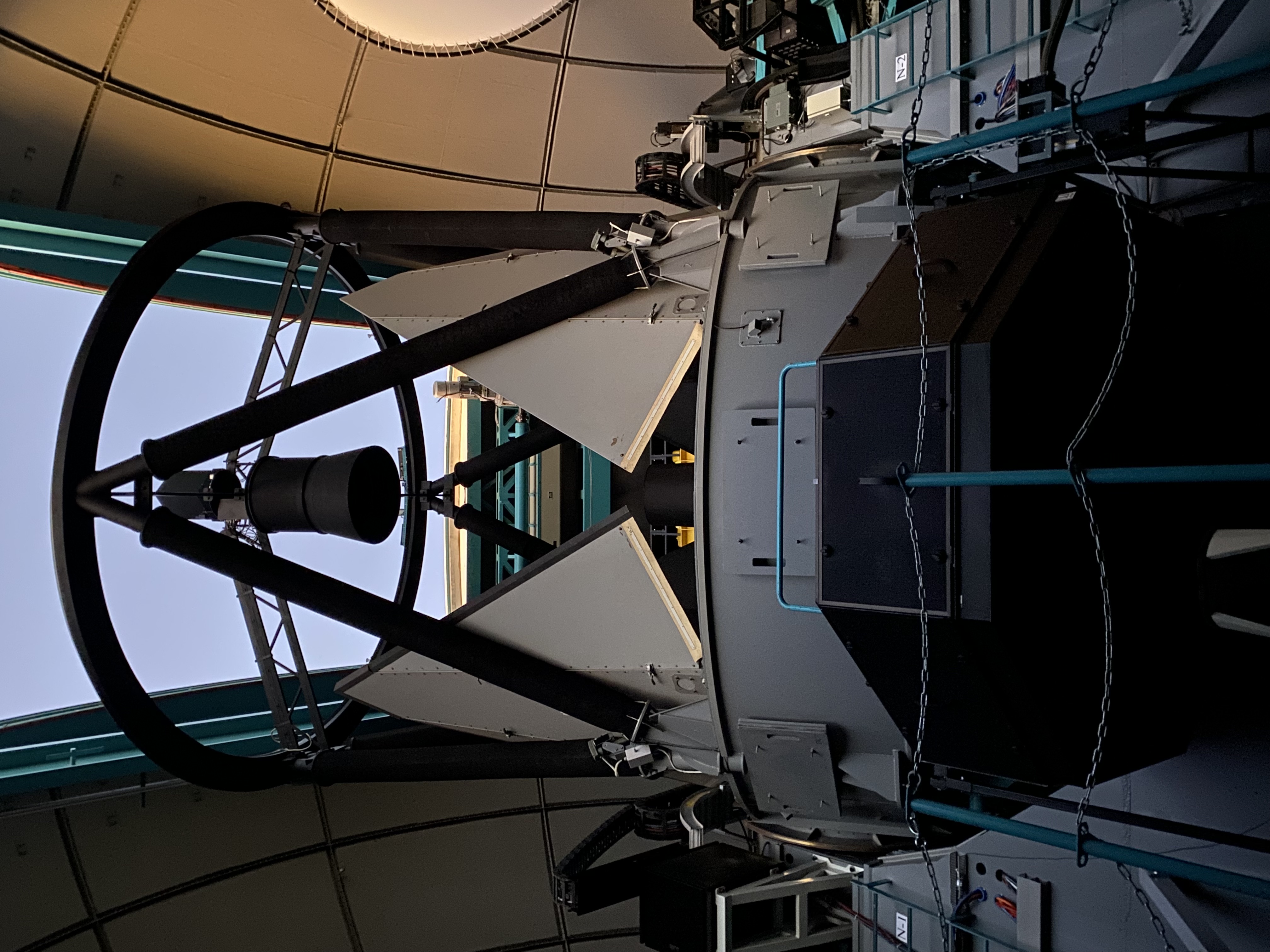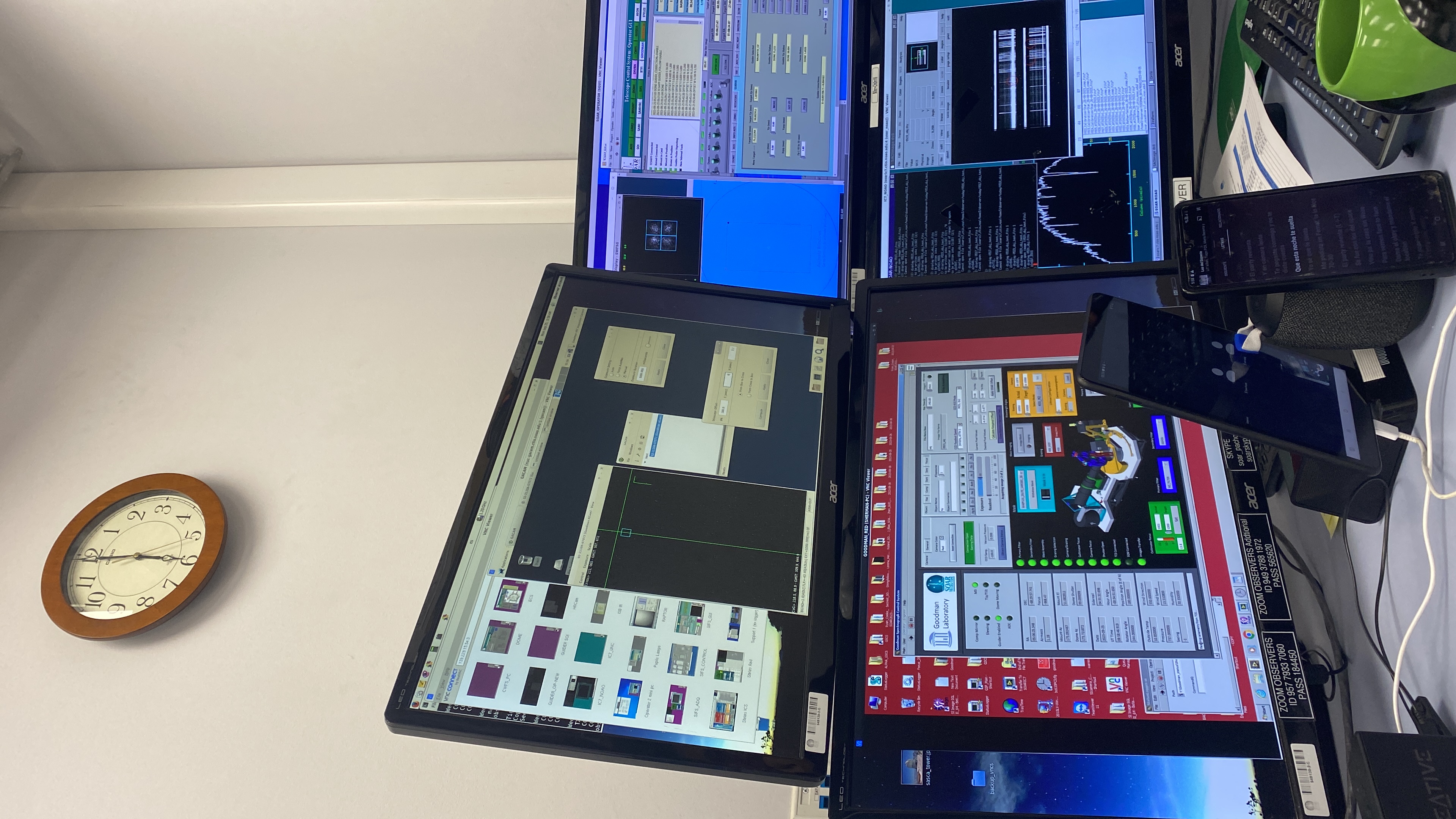Observing diaries - La Serena
Written on October 20th, 2023 by Marina Cano Amoros
On Sunday 10th of September I arrived in the city of Santiago, Chile. I am going to be here for three months as part of the EXOWORLD Staff Exchange and I will be working on exoplanet atmospheres.
The weekend of the 22nd-24th of September was my first ever observing trip and it was honestly very exciting! On the Friday I travelled from Santiago to La Serena, a chilean city by the coast. The morning afterwards I was taken from the SOAR headquarters in la Serena to their facilities in Cerro Pachon, at 2713 meters from the sea level. SOAR stands for Southern Astrophysical Research Telescope. With a 4.1 meter aperture telescope, SOAR is one of the leading research facilities in the southern hemisphere working in the optical to near-infrared wavelength range. Special mention to the driver who made the almost-two-hour ride incredibly fun, explaining various stories about the mountains we were on, the different fruits that were cultivated and the animals that one could see on the ride. When I arrived I met Carlos, one of the Telescope Operators who offered to show me around. On our way up to SOAR, I was able to pass by the Vera Rubin Observatory, which is currently under construction and will perform a ten-year survey of the Southern Hemisphere sky. Also on the same mountain is the Gemini South telescope. From the image below you can see all the exceptional telescopes on Cerro Pachon.
Finally we reached SOAR, and let me tell you, the views was… breathtaking. Below is a picture of the many I took of the sunset. The feeling up in the mountain was of absolute peace, silence and serenity. I was feeling incredibly grateful for being in such a remote place in the world.

After taking in as much as I could of the view, we entered the observatory. Carlos showed me the telescope (see photo below), the control room, and the most important room, where all the cookies are stored for the long observing nights. During that first visit I was able to stay in the control room and see how an observation was being conducted remotely by Brasilian colleagues. That night we left the observatory at around 1:30 am, as part of a training to stay up late and switch my sleep cycle for the next night.

On Sunday at 4pm we went up to the observatory for the first calibrations. You might be wondering why I was at SOAR in the first place. I was there to assist in an observation that would be performed remotely from China as part of a Chilean-Chinese collaboration. The observation involved transit spectroscopy of a transiting exoplanet, WASP 69b.
When a planet transits its host star, the stellar light that passes through the exoplanet atmospheres allows us to infer the chemical composition of said atmosphere. WASP 69b is a type of exoplanet known as Hot Jupiter. It has 0.2 times the mass of Jupiter, around the same radius, but a temperature of 963 K! It takes only 3.9 days for WASP-69b to orbit its star. Results from a previous observation seem to suggest TiO exists in the atmosphere of WASP-69b (Ouyang et al. 2023). This data however was obtained from only now night and so more transmission spectroscopy observations are needed to confirm the presence of TiO. Therefore, the observing plan was to simultaneously observe WASP 69 (the host star) with Goodman at SOAR and with another spectrograph called IMACS on the Magellan telescope. By conducting these simultaneous observations we want to confirm the presence of TiO absorption features and also compare between results from two different instruments and constrain instrumental systematics.
The observations started at around 10:30 pm and lasted until 3 am. We took many exposures of WASP-69 as well as a reference star, in order to later correct the time-varying effect of Earth’s atmosphere on the observations. Below you can see the screens we look at whilst performing the observations. We monitor constantly the count rate (the light reaching the detector), air mass (amount of air in the line of sight to our target), and the seeing (effect caused by the turbulence of the atmosphere). Everything went relatively smoothly and after we were done, since we still had some observation time left, we looked at some other targets.

At around 7:30 am we left the observatory, I was exhausted but very excited at the same time for the observations we had just conducted. I slept late into the afternoon and after lunch I travelled back to la Serena airport and flew back to Santiago. Overall that weekend was one of the most unique experiences of my life and I will never forget the feeling of being up in the telescope. I’d like to specially thank Carlos and Fernando, the two amazing telescope operators at SOAR who showed me around, helped me understand what I was doing, taught me chilean traditions and helped me solve my sudokus!



